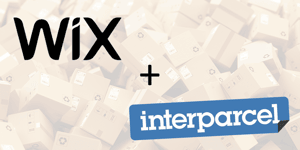Are you looking to move your home-grown business online? You're not alone! There are so many tools out there today that can help you get into the eCommerce world and help your business thrive in the process. There are lots of website-building helpers to choose from that can help you set up your online shop, create pages for your products and even help you when marketing your small business. Shopify and Squarespace can cater for any business, if you're a potter or a sunglass seller, these eCommerce platforms can help you create a website that is true to your craft and brand.
We know that there are lots of eCommerce helpers to choose and many sellers aren't sure whether to make the jump from eBay or Etsy to a fully functioning website of their own! So we want to share some features that you can benefit from across all eCommerce platforms that have helped many small businesses flourish!
1. User-friendliness

First you'll want your customer to be able to navigate your website and find what they're looking for in your fantastic products! Ensuring that your customers can browse your website issue free, making purchases quickly and easily, is a must. eCommerce website builders will make sure this happens. If you're already marketing your products on social media, you want your customers to be able to visit your website, find the products they've seen and like, and purchase ASAP! Luckily, there are some tried and trusted principles of how to create a user-friendly website:
- Minimise clutter: Your website should be easy to get through, with clear buttons showing the customer where to go. A complicated navigation will likely cause confusion in your customers and cause them to bounce off the site (onto a competitors website!).
- No pop ups: Although pop-ups can be a handy marketing strategy, avoid having these on the homepage as they can put customers off.
- Showcase your product lines: Let customers know what your store is about and what they can expect by using the homepage to demonstrate. A good rule of thumb for this is to feature around 30% of your main categories on your homepage.
- Use breadcrumbs: These are navigational links that sit above your product listing and make navigating around your site more intuitive from a customer perspective. Be sure to take time to think about your categories and make sure there's a logical flow between categories and products. You can imagine how frustrating it would be to be searching for a book on world history and find yourself browsing animal fancy dress outfits instead.
2. Blog for Search Engine Optimisation

Hopefully you'll have heard of blogging (it's 2020!) and the ways it can help small businesses access an audience of potential customers. Typically, your blog should emphasise the business ethos you're looking to convey through your eCommerce website, just in more detail. An article on a blog should aim to target the phrases or keywords that your customer demographic would be searching for when looking for your products.
As a business owner, you'll want to use a website builder with:
- A user-friendly rich text editor
- Effective file management system that allows you to upload videos, images or attachments so customers can see your excellent products
- Control of content metadata (metadata is the data that describes your products, or your business - like an 'About' page)
3. Customer testimonials
Customer testimonials are super helpful when you think about the fact that 97% of consumers will check out product reviews before making a purchase. Having positive customer testimonals proudly displayed on your eCommerce website lets other customers know how great your business is and how happy other customers are! Be it your unique packaging talents or your environmentally friendly materials, learning how to get customer reviews and showing them off is a great strategy. This is why you will often find testimonials near the top on a website's homepage. It immediately provides that business with credibility.
4. Support of popular payment methods

If you've ever purchased something online (who hasn't!), you've probably used a payment gateway like PayPal or WorldPay. They will handle the transaction, keeping your customers sensitive information completely safe and saving you a headache! Most of the eCommerce giants like Shopify and BigCommerce have these gateways integrated with their service and doing so saves you a lot of manual data entry hours when you can integrate these gateways into an accounting software like Xero or Quickbooks. With this integration you'll seamlessly transfer and sync information from your chosen eCommerce platform (orders, invoices, sales) directly to your accounting software.
5. Reporting tools
This solution is essential as it allows you to know which products are performing best, and which ones aren't selling so well. This allows you to rejig your promotions and direct your resources effectively. Understanding the data gives you a better sense of the 'why' behind your customers actions so you can tweak your listing or marketing.
Most of the popular eCommerce platforms offer some kind of analytics dashboard or allow you to integrate directly with Google Analytics to track your site's performance. The kinds of data you will find most useful to analyse are:
- Demographic information - this will tell you who your customers are. It includes things like age, gender, location and even income range. So you can ensure you are targetting the right kind of customers
- Traffic source - this tells you how people are finding your website. Are they coming from Google, Facebook or a link from a friendly blogger
- Session duration - this one will let you know how long customers spend on your website. If people find your site
- Conversions - this tells you how many people purchase something when they visit your store
- Bounce rate - the bounce rate is customers who click onto and immediately off your website (you don't want that)
6. Email marketing integration

Building and utilising an engaged email list is a vital part of growing your eCommerce business once you've got the basics down. In fact, email marketing is one of the most effective marketing channels around today. It's a really useful tool to engage with customers and highlight products or promotions they may find useful. When starting out you can simply create an email with design helpers like Canva and send an email out to a small list of customers that have purchased from your website.
Once you've grown your mailing list a little, you can integrate your eCommerce store with an email marketing software like Email Blaster, Mailchimp or HubSpot. With one of these you'll be able to make sure your mailing list is updated and you can send promotional emails about new products, discount codes or even free shipping. You want to make sure that you're collecting customer emails often and you can do this via pop-up surveys or newsletter sign-ups and at checkout so you can start to build your community from the get-go.
7. Ability to manage orders and inventory
Nowadays, most eCommerce platforms either have a native shipping tool or the capability to integrate with one. What you're looking for is a platform that can easily integrate with all of the major platforms and completes the entire shipping process from order to delivery in just a couple of clicks! Interparcel's Shipping Manager integrates with the top eCommerce platforms like ebay, Shopify, WooCommerce, Etsy, BigCommerce and Squarespace and takes the administrative work out of your hands, leaving you free to focus on running your business!
Our low cost and high-quality shipping services have helped thousands of UK businesses handle orders, address labels, and shipping options all from one place. Whilst our friendly UK based parcel experts are always on hand to offer support and advice. Getting a new business started can be difficult and time-consuming if you're the sole worker churning our handcrafted products - our shipping integrations were created to save you time and money so give it a try today!
8. Mobile-friendly/responsiveness

People use their phones so much more these days. In fact, 30% of mobile shoppers will abandon a transaction if the website is not optimised properly for mobile. What do we mean by optimised for mobile? A responsive website should automatically resize and adjust to different (smaller) screen sizes. This makes for an optimal viewing experience by the reader and will undoubtedly reduce the bounce rate of your website.
It's becoming such a necessity that in 2012, Google confirmed that having a responsive web design will help your site to climb the search rankings, so more customers will be able to find your business!
Now, while most website builders will have this feature included with their platform, there are a few things that you can do as a small business to ensure that your customer gets the best experience possible:
- Never create seperate web pages for different platforms - make each page work across all screen sizes
- Keep site navigation uncluttered and minimalist
- Keep product descriptions or large bodies of text short and concise
- Ensure buttons or links are large enough to be seen and tapped with a finger
- Compress all images and files for speedy load times
These optimisations may be a little more complicated when starting out but eCommerce platforms are there to help you through the tough stuff! Their features often mean that mobile-friendly websites are a given when using their tools. Making the step from online marketplaces like eBay to a website tailored to your products can be scary but also exciting! It's a sign that your business is ready to take the next step, grow professionally and move on to greener pastures (aka more sales!) - many of these eCommerce platforms offer free trials so why not have a go and see what they can offer you and your small business.










 Facebook
Facebook Twitter
Twitter Instagram
Instagram Linked In
Linked In YouTube
YouTube